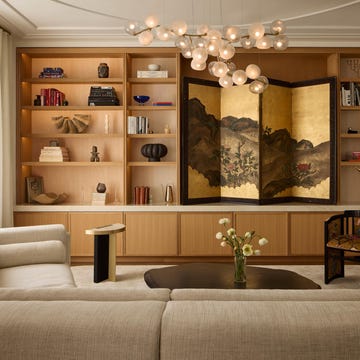London-based architecture practice McLaren Excell may be known for its ultra-modern aesthetic, but actually, according to Rob Excell, much of what he and co-founder Luke McLaren do is find clever, elegant ways to breathe life into historic buildings, reimagining their flow to gently usher them into their next chapter.
This Georgian townhouse in London is a perfect case in point. Previously treated to an unsympathetic renovation, its owners wanted something better for it and their family. As well as the six-storey building, they also owned its former mews property (a space that would once have served as a stables for the grand house) at the end of the garden. The aim was to somehow unify the two in a way that felt fitting.
‘Our work is portrayed as very contemporary,’ says Rob, ‘but over 50 per cent of that project was about restoration and how we put back historical elements to allow the new parts to sit comfortably next to them.’
What's everyone reading?
Key to unlocking this 3D puzzle was the space between the townhouse and the mews. ‘Should it be connected internally? Should there be an external courtyard and then we connect the two properties at the lower ground-floor level? In the end, the second option is where we landed,’ Rob explains.
The plan involved extending the basement of the main home into the mews, removing the latter’s ground floor to create a room with a monumental seven-metre-high ceiling. That’s now a gallery-like space dedicated to listening to records, screening films and hosting exhibitions.
‘To begin with, the journey was about creating clarity in the different spaces, but we always knew that the clients came to us because of our interiors as well,’ says Rob of the project, which saw his team overseeing every detail, from door handles to light switches. McLaren Excell largely works with concrete, blackened steel and timber, but while the architecture might feel clean and to the point, it’s never cold.
The richness of the timber, the finishes of the metalwork and lime-plaster walls, as well as carefully chosen areas left unrestored, all create a quietly soulful canvas ready to receive the new. Working with what you’ve got makes sense from a sustainability point of view, says Rob, recalling a ‘horrible timber floor’ that was sanded back to its original pine, then white-oiled, despite the temptation to throw it out and replace it with something new.
It’s all part of the fascinating dialogue that comes from restoring an old building – a back-and-forth conversation with designers from centuries past who worked on the building first, rather than a monologue.
‘I relish it,’ Rob says, simply. ‘The offset between what we provide and the historic element becomes an exciting part of the journey.’ This family home is now thoroughly future-proofed. As the kids grow up, there’s a studio flat ready for them at the front of the house – a space that can also be adapted if grandparents need to move in. ‘If we’re hearing nothing, they’re happy!’ Rob wryly observes of his approach to client satisfaction, adding that he gets updates from time to time as they discover a new corner to enjoy. ‘There are some surprises along the way.’ mclarenexcell.com
















